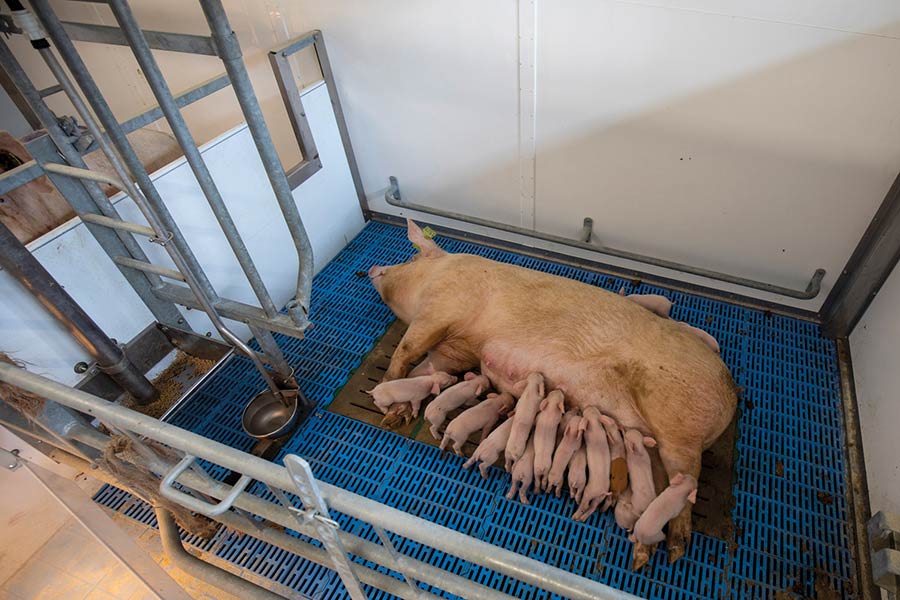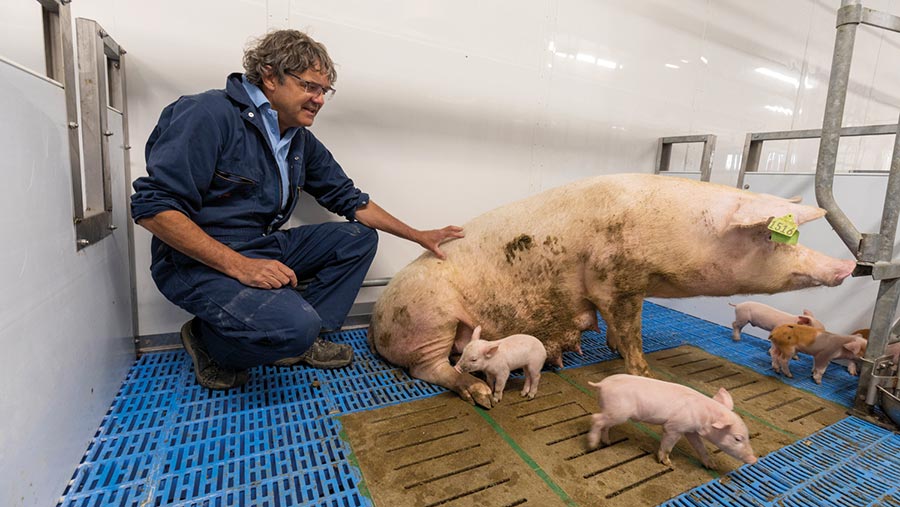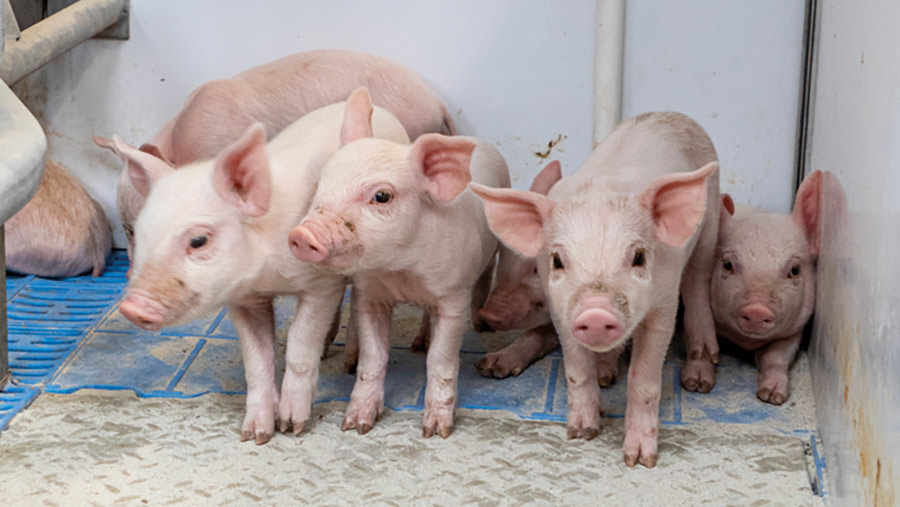Advice on switching to temporary crating as pressure grows
 © ARM Buildings
© ARM Buildings In June the European Commission announced that, by 2023, it would put together proposed legislation to phase out the use of cage systems in farming, including farrowing crates for sows.
Defra has also stated that it aims to end the use of farrowing crates in the UK, although no further details on future requirements or timescales for a shift to freedom farrowing systems have been given.
We spoke to Zoe Davies, chief executive of the National Pig Association, and Tim Miller, environment specialist at ARM Buildings, to learn more about the outlook.
See also: How realistic is free-farrowing for the UK pig industry?
We also asked several UK producers who have installed temporary crating – an adjustable form of free-farrowing which the industry believes provides a more feasible alternative to complete free-farrowing – for advice on using them.
What is the outlook?
In June, the European announcement came in response to the End the Cage Age campaign, calling for a ban on cage systems from 2027. Although the commission has confirmed it plans to phase out caged systems, it has not actually committed to the 2027 timescale, and it said it would first assess the feasibility and impact of such a move.
Dr Davies emphasised that a deadline of 2027 is not realistic for any country. Last year, Germany specified the deadline of 2035 for its producers to convert their farrowing accommodation to temporary crating.
“The transition away from conventional farrowing crates to alternative systems will be the most significant change faced by pig farmers in decades,” says Dr Davies. “So it is crucial the government works with the industry to ensure we can retain a thriving pig sector and avoid simply exporting production to countries still using farrowing crates.”

© ARM Buildings
She confirmed that the NPA will be arguing for a voluntary phase-out over a sensible time and strongly advocating the use of temporary crating to allow pig farmers to continue to protect piglets.
She adds: “We will also be pushing for equivalent standards on government procurement and imports, and for retailers to support all suppliers, both UK and EU, to make the transition.”
What are the options?
Whichever farrowing system producers choose, the change will involve a major investment, both financially and from a management perspective.
A free-farrowing system allows the sow complete freedom to move around throughout farrowing and lactation, but it is difficult to keep piglet mortality levels low and more experience and adjustments are needed for users of these systems.
Temporary crating allows the sow free movement throughout lactation while enabling her to be restrained for a few days during farrowing to increase protection for newborn piglets.
Mr Miller has visited most units with temporary crating systems in the UK – currently, these number about 14 – and has seen how, with the right management, they can benefit the welfare and performance of both sows and piglets.
The widespread view among these producers is that anyone installing new farrowing accommodation should be looking at a temporary crating system to help future-proof their investment.
However, there are some key factors to consider:
Extra space
Most temporary crating designs have a larger footprint than a conventional farrowing crate, typically between 5.5 sq m and 6.5 sq m. More space is required to fit in the same number of farrowing places. So if producers are converting existing buildings from conventional to temporary crating, an additional building is likely to be needed to make up the difference.
For example, on a unit with five farrowing rooms with 48 to 50 places each, a conversion to temporary crating would reduce housing to only 38 to 40 sows, meaning an extra farrowing room would be required. Of course not all sites will have suitable extra space available.
The transition needs careful planning, as each room cannot be used for three or four weeks while it is being converted. New buildings will take months to complete.
There is also a practical limit to the capacity of specialist building companies to install new farrowing systems, so there may be a backlog.
Costs
The cost of installing temporary crating ranges from £5,500 to £6,000 a sow place for a new build, compared with £3,500 for conventional crates, and it costs about £2,000 to £2,600 a place to convert an existing shed.
If you convert an existing shed and build a new room to make up the balance of sow numbers, it averages out between £3,000 and £3,500 a place.

ARM Buildings environment specialist Tim Miller © ARM Buildings
Pen opening
While the total pen footprint is 5.5sq m or more, the fully-opened area available to the sow can vary between 3sq m, if the crate sides move open into a triangular shape, and 4sq m, if the design creates a rectangular area.
Both options give the sow plenty of room to move around comfortably, although there may be future government stipulations on space requirements for the sow as more detail becomes known.
The crate can be opened to fully release the sow between day three and five after farrowing, depending on how comfortable the stockperson is with each sow. Once they feel confident with the system, a further step is to keep the crate completely open throughout farrowing. A couple of producers have trialled this successfully with gilts and younger sows.
The layout also needs to allow stockpeople to easily restrain the sow for brief periods when assisting or handling her or her piglets, for example at vaccination.
Enrichment and slurry handling
Producers highlight environmental enrichment materials for sows as a key consideration. Hessian sack is often used, along with shredded paper for nesting. This should be provided on the floor or in racks. Straw is also used on some units.
Options to aid slurry handling include putting a scraper underneath the slats or using a slurry separator.
Durability
There should not be too many moving parts, and the pen construction needs to be durable.
Temporary crating systems have slatted floors and the whole floor area must withstand the weight of the sow.
Creep area
Creating a micro-environment that piglets are drawn to, away from the sow, helps protect them from being laid on.
Some temporary crating systems have a heat mat for piglets, with a bar that prevents the sow from entering the heated area. Other producers prefer a covered creep area because it offers more protection from the lower room temperature, given that there are fewer sows to a house.

Heated floor mats can help draw the piglets away from the sow © ARM Buildings
Sow feeding and performance
Producers report that sows are visibly calmer and more contented in temporary free-farrowing systems compared with conventional ones. They have found sows are also more active, tending to eat and drink more and produce more milk.
Most units use bowl drinkers in their temporary crating, which encourage higher water intakes than nipples. Automatic ad-lib systems are used in nearly all temporary crating systems, and they help avoid the increased risk of piglets getting laid on when sows get up and down at set feeding times.
One producer has found that feed intakes increase quickly with its ad-lib feeding system and level off at about 10kg a sow a day, with sows eating more in total than when feeding manually – and with no feed wastage.
Producers also seem to be managing piglet mortality in temporary crating systems and, so far, mortality and average piglet weaning weights achieved can be comparable with conventional systems once stockpeople get used to the new system.
